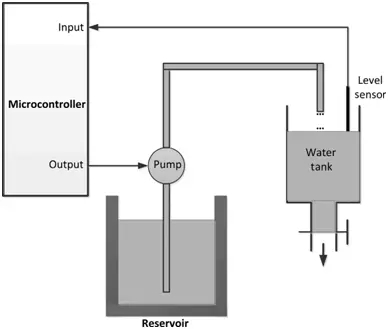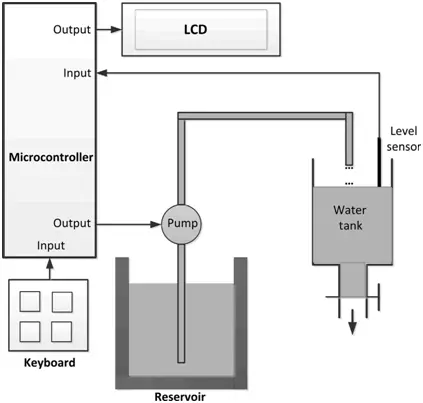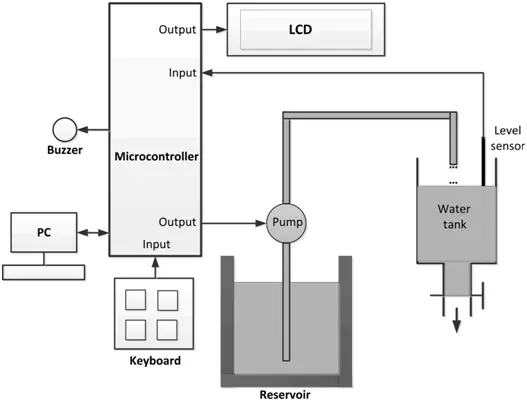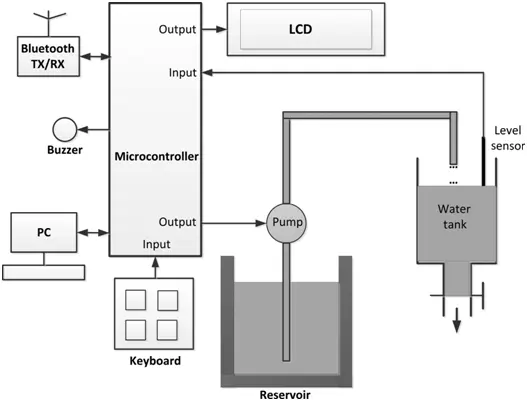Building Skills Through Projects
This project’s strength lies in its project-based approach. Learning by doing is a powerful technique, especially in the realm of embedded systems. By working on progressively complex projects, learners can solidify their theoretical understanding of PIC microcontrollers and C programming.

Here’s a breakdown of the potential skill development:
- PIC Microcontroller Architecture: Understanding the internal workings of a PIC microcontroller, including its memory organization, registers, and peripherals.
- C Programming for Microcontrollers: Mastering the fundamentals of C programming with a focus on its application in a resource-constrained environment.
- Peripheral Interfacing: Learning to interact with various hardware components like LEDs, LCDs, sensors, and communication modules using the PIC microcontroller’s features.
- Project Planning and Implementation: Developing the ability to break down a project into smaller tasks, write efficient code, and troubleshoot issues.

Content Breakdown: Basic to Advanced
The “Basic to Advanced” aspect of the project implies a structured learning path. We can expect the initial projects to focus on fundamental concepts like blinking LEDs, reading pushbuttons, and displaying simple characters on an LCD. As learners progress, the projects might involve:

- Sensor Integration: Interfacing with temperature sensors, light sensors, and other environmental sensors to collect data and make control decisions.
- Communication Protocols: Implementing communication protocols like I2C and SPI to connect the PIC microcontroller with other devices.

- Data Logging: Storing and logging sensor data on external storage devices like SD cards.
- Wireless Communication: Exploring wireless communication options like Bluetooth or LoRa for data transmission.
- Advanced Algorithms: Utilizing more complex algorithms for tasks like signal processing or motor control.
The specific project details will depend on the chosen resources (books, online courses) but the overall structure of progressing from simple to complex should provide a clear learning path.

Considerations and Resources
While the project offers a valuable approach, there are some factors to consider:
- PIC Microcontroller Selection: Different PIC families cater to varying needs. Ensure the project focuses on a specific, readily available microcontroller to avoid compatibility issues.
- Development Tools: The project should clearly outline the required development tools, including Integrated Development Environments (IDEs) and compilers. Popular options for PIC development include MPLAB X IDE and MikroC Pro for PIC.
- Prior Knowledge: The “Basic” level might assume some foundational knowledge of electronics and C programming. If you’re a complete beginner, consider introductory resources before diving into the project.
- Project Documentation: Well-documented projects are crucial for understanding the code, circuit diagrams, and component choices.
Conclusion: A Rewarding Journey into Embedded Systems
“PIC Microcontroller Projects in C: Basic to Advanced” has the potential to be an empowering project for anyone interested in embedded systems development. By following a structured learning path through well-defined projects, you can gain valuable skills in PIC architecture, C programming, and hardware interfacing. Remember to choose resources that align with your chosen PIC microcontroller and development tools, and address any knowledge gaps beforehand. The journey through these projects will equip you to design and build innovative applications using PIC microcontrollers.
Starting simple with basics like LEDs and buttons gets learners hands-on quickly to stay engaged. Small wins build confidence for tackling more complex projects.
Gradually increasing the scope prepares learners for real-world constraints like limited resources. It mirrors the iterative process used in professional development.
Having clearly defined milestones likely improves time management and focus versus an open-ended format.
Working through a curriculum with various resources can expose learners to different coding styles and best practices.
Building on previous projects reinforces retained knowledge better than isolated lessons. It shows how concepts interconnect in applications.
Working directly with hardware helps develop troubleshooting skills not gained through simulations alone.
Learners can progress at their own pace within the structured path. This accommodates varying skill levels and schedules.
Documenting the process develops technical communication abilities important for collaboration and knowledge sharing.
Successfully completing projects provides a sense of achievement that motivates continuing education in this field.
The skills align with industry needs, increasing career opportunities involving IoT, robotics, industrial automation and more.
Begin with an initial module that introduces fundamental electronics principles, soldering techniques, and setting up development tools, laying a solid groundwork. Organize group activities around specific themes, such as input devices, output mechanisms, and communication protocols. In each thematic module, present concepts through straightforward projects and gradually increase complexity. Structure projects with optional checkpoints, starting with basic tasks like getting an LED to blink before advancing to additional functionalities. Offer variations of projects at varying difficulty levels, such as basic and advanced temperature sensors, to cater to different skill levels. Allow for component substitutions to accommodate accessibility needs or personal preferences, including different types of LEDs, sensors, or microcontrollers. Ensure thorough documentation of projects, including detailed instructions, schematics, and code explanations for clarity. Promote modularity in code by encouraging the use of functions for easier code reuse across different projects. Incorporate quizzes and theoretical tutorials between projects to reinforce understanding of underlying concepts. Include troubleshooting exercises and simulations to address common errors and develop problem-solving skills. Consider implementing a final project that integrates multiple previously learned skills to showcase mastery. Offer optional opportunities for open-ended prototypes or competitions to encourage creative application of acquired knowledge. Provide various feedback channels, such as forums, surveys, and individual check-ins, to continuously enhance the learning experience.
Implement coding quizzes following tutorials to assess comprehension before proceeding to projects, emphasizing feedback over high stakes. Utilize project rubrics to clearly delineate goals and success criteria, facilitating self and peer evaluation. Mandate code submissions to automated tests to ensure functionality and adherence to coding best practices. Conduct oral defenses where learners articulate project approaches, obstacles encountered, and lessons learned, evaluating communication skills. Administer hands-on practical exams wherein learners construct sample circuits on a test bench to validate applied skills. Assign collaborative projects, fostering teamwork and assessing soft skills. Introduce checkpoints for resume and portfolio development to refine employment documentation. Conduct periodic learner surveys to gauge engagement, comprehension, and identify areas for improvement. Evaluate capstone projects through demonstrations, documentation, and public showcases. Administer alumni career surveys post-program to measure long-term outcomes and program impact. Offer optional industry certifications to validate attainment of professional competencies. Award digital badges for mastery of specific skill modules or objectives, visible on platforms like GitHub and LinkedIn.
Follow this link for complete project: PIC Microcontroller Projects in C: Basic to Advanced – A Project Deep Dive
